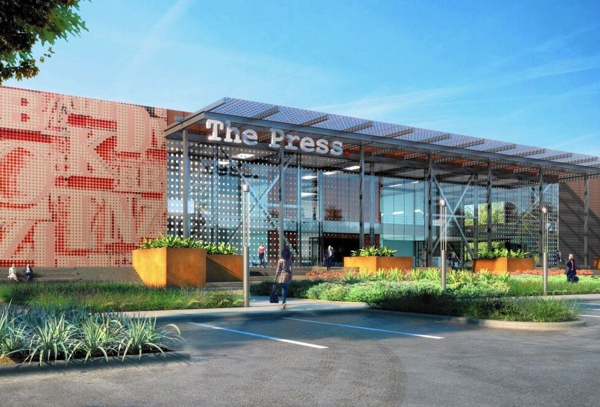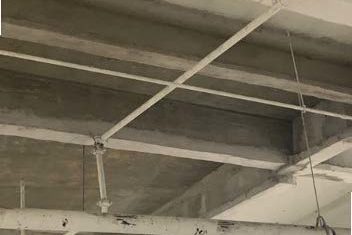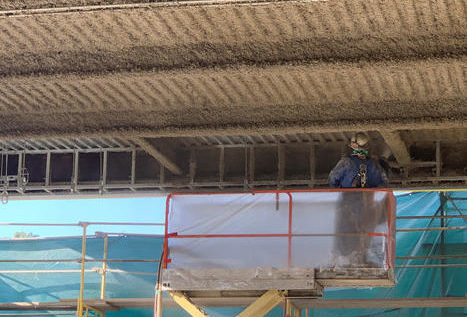
Quality fireproofing is critical to protect the structural integrity of a building in the event of a fire. Fireproofing is a form of passive fire protection that will make your building safer and is always ready to protect structures from high temperatures of a fire. Spray applied fireproofing is the most common type of fireproofing. Our spray applied fireproofing, also known as sprayed fire-resistive material (SFRM), provides a cost-effective solution to meet hourly ratings required by local building codes. Per client demand, we offer conventional, cementitious, and intumescent fireproofing at a variety of densities. Consulting services are also provided by Cell-Crete to meet specialty fireproofing design requirements.
INSTALLATION PROCESS
Our sprayed fire resistive material (SFRM) is mixed on site and sprayed in place using pumping equipment. SFRM can also be troweled following complete spray coverage to provide an aesthetically pleasing finish. We mask and protect all work areas, as well as clean-up any messes to leave the area clean. Our fireproofing teams are experts in their field, with years of experience installing fireproofing.
CEMENTITIOUS FIREPROOFING
Cement or gypsum-based product, applied in layers to provide fire protection, used to protect the structural steel elements of a building, prolonging the buildings structural integrity, in the event of a fire.
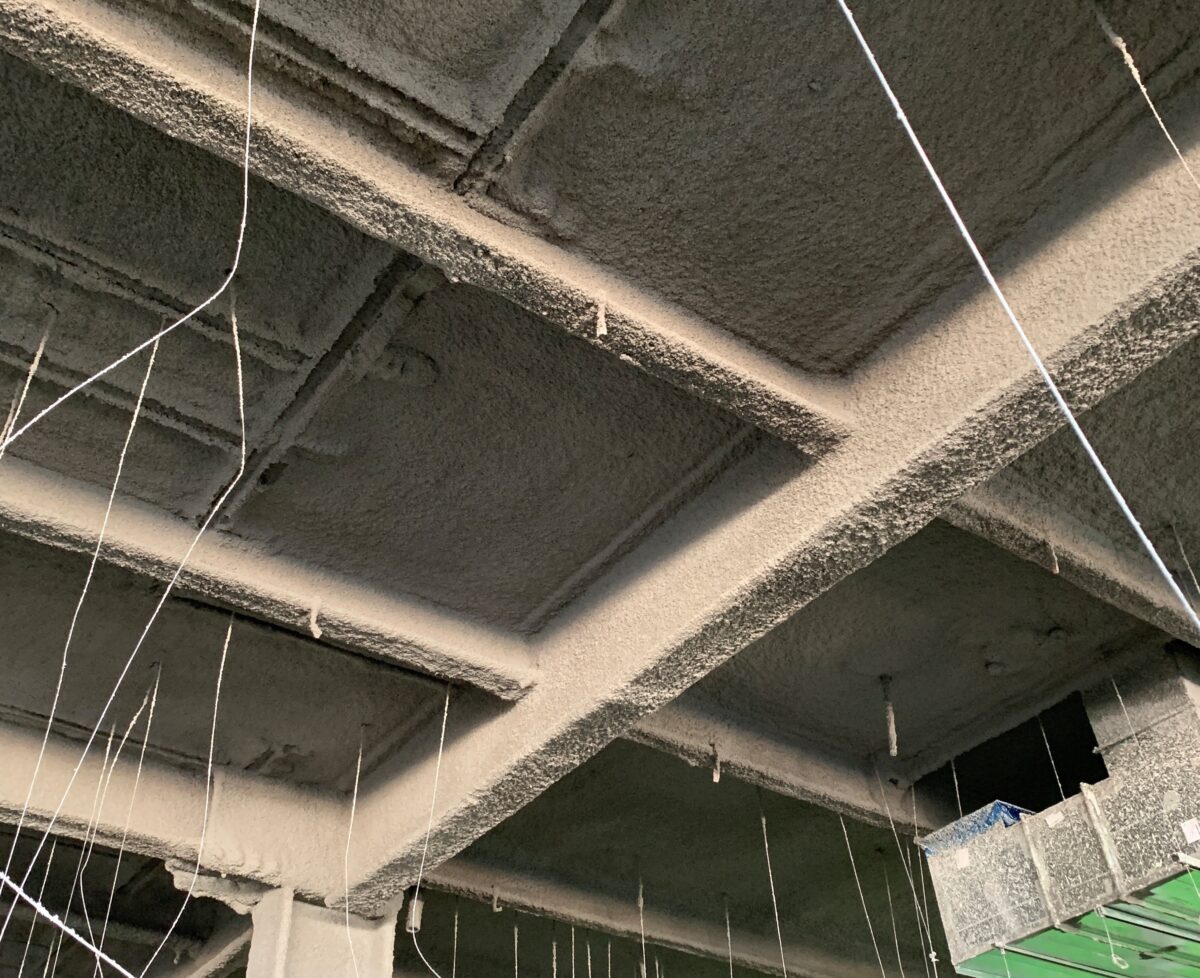
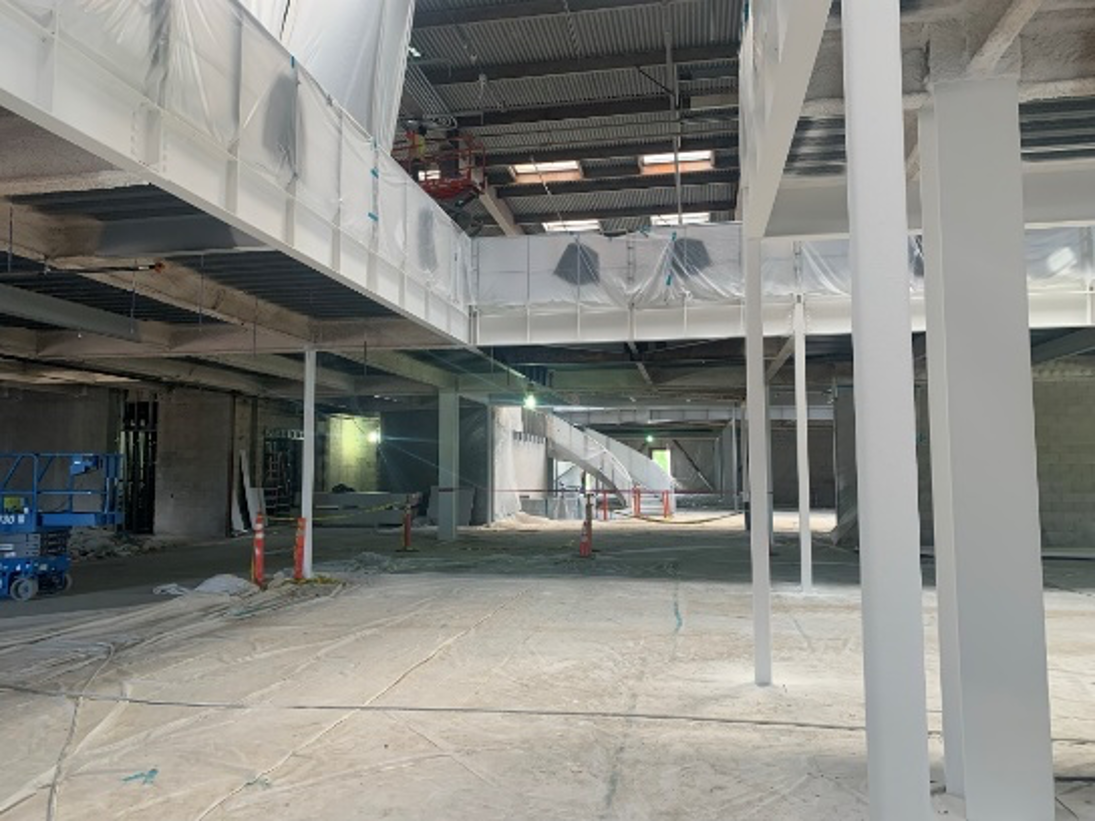
INTUMESCENT PAINT
Intumescent paint is spray or trowel applied to the structural steel elements of the building, used to increase the buildings resistance to fire. In the event of a fire, the intumescent paint expands and forms a protective char, reducing the amount of heat that can reach the steel.
ACOUSTICAL SPRAY/K13
Spray applied acoustical material provides an ”R” Value and NRC rating that reduces reverberation and noise levels. The high acoustical absorption assists in meeting OSHA noise level requirements. Ideally in offices or conference rooms K-13 material significantly reduces sound transfer between walls and floors in noisy areas.
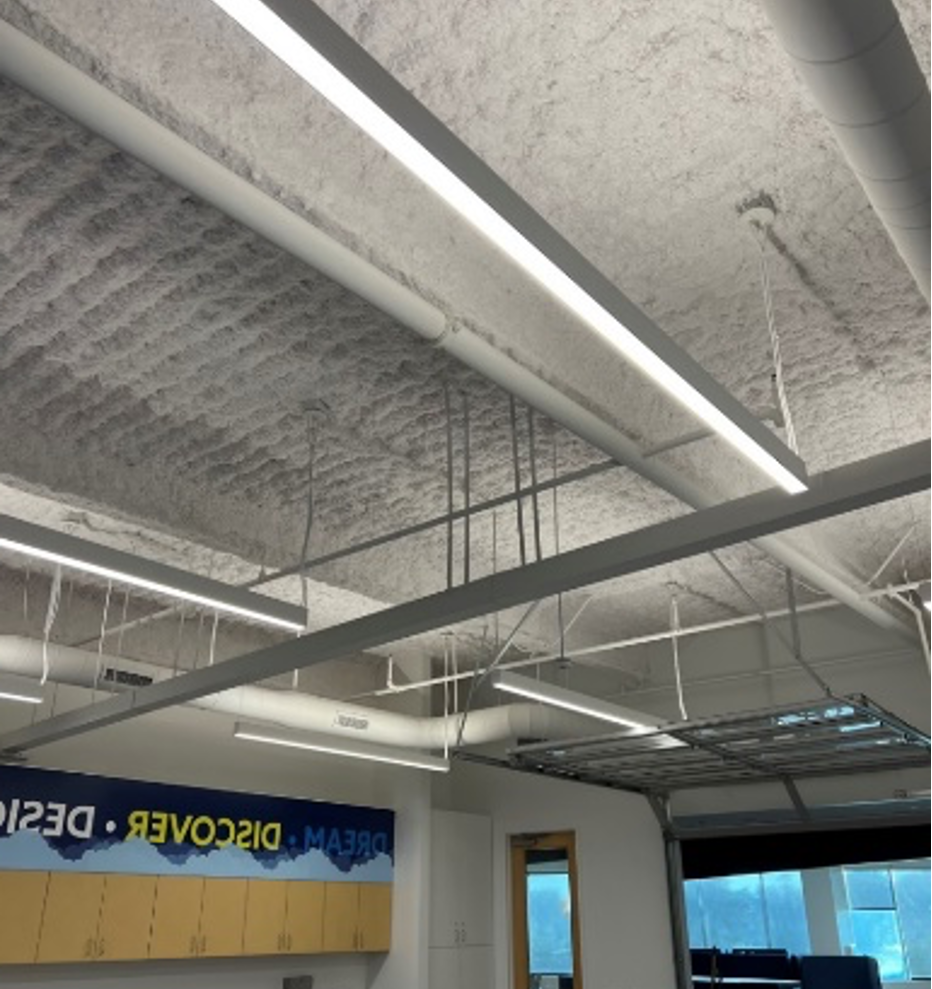
ESTIMATING & PROJECT MANAGEMENT TEAM
CONTACT US!
At Cell-Crete, we excel at fireproofing services for our clients. Contact us to fireproof your structure!

